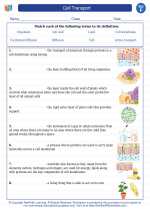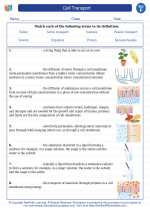Ceramic
Ceramics are non-metallic, inorganic materials made from clay and hardened by heat. They are commonly used in everyday items such as pottery, dishes, and tiles, as well as in specialized applications such as in the aerospace and medical industries.
Types of Ceramics:
- Traditional Ceramics: These include pottery, porcelain, and bricks.
- Advanced Ceramics: These are engineered ceramics used in high-tech applications, including cutting tools, biomedical implants, and electronic components.
Properties of Ceramics:
- Hardness: Ceramics are extremely hard and resistant to wear.
- Brittleness: They are also brittle and can fracture under high stress.
- Heat Resistance: Ceramics can withstand high temperatures, making them useful for applications involving heat.
- Electrical Insulation: Many ceramics are good insulators of electricity.
- Chemical Stability: They are resistant to chemical corrosion.
Study Guide:
When studying ceramics, it's important to understand the different types of ceramics, their properties, and their uses. Here are some key points to focus on:
- What are the main types of ceramics?
- What are the key properties of ceramics?
- How are ceramics used in everyday life?
- What are some advanced applications of ceramics in industry and technology?
- What are the advantages and disadvantages of using ceramics compared to other materials?
Understanding these concepts will provide a solid foundation for learning about ceramics and their importance in various fields.
.◂Science Worksheets and Study Guides Sixth Grade. Cell Transport
Worksheet/Answer key Cell Transport
Cell Transport  Worksheet/Answer key
Worksheet/Answer key Cell Transport
Cell Transport  Vocabulary/Answer key
Vocabulary/Answer key Cell Transport
Cell Transport  Vocabulary/Answer key
Vocabulary/Answer key Cell Transport
Cell Transport 

 Worksheet/Answer key
Worksheet/Answer key
 Vocabulary/Answer key
Vocabulary/Answer key
 Vocabulary/Answer key
Vocabulary/Answer key

The resources above cover the following skills:
Reading Standards for Literacy in Science and Technical Subjects
Craft and Structure
Determine the meaning of symbols, key terms, and other domain-specific words and phrases as they are used in a specific scientific or technical context relevant to grades 6-8 texts and topics.